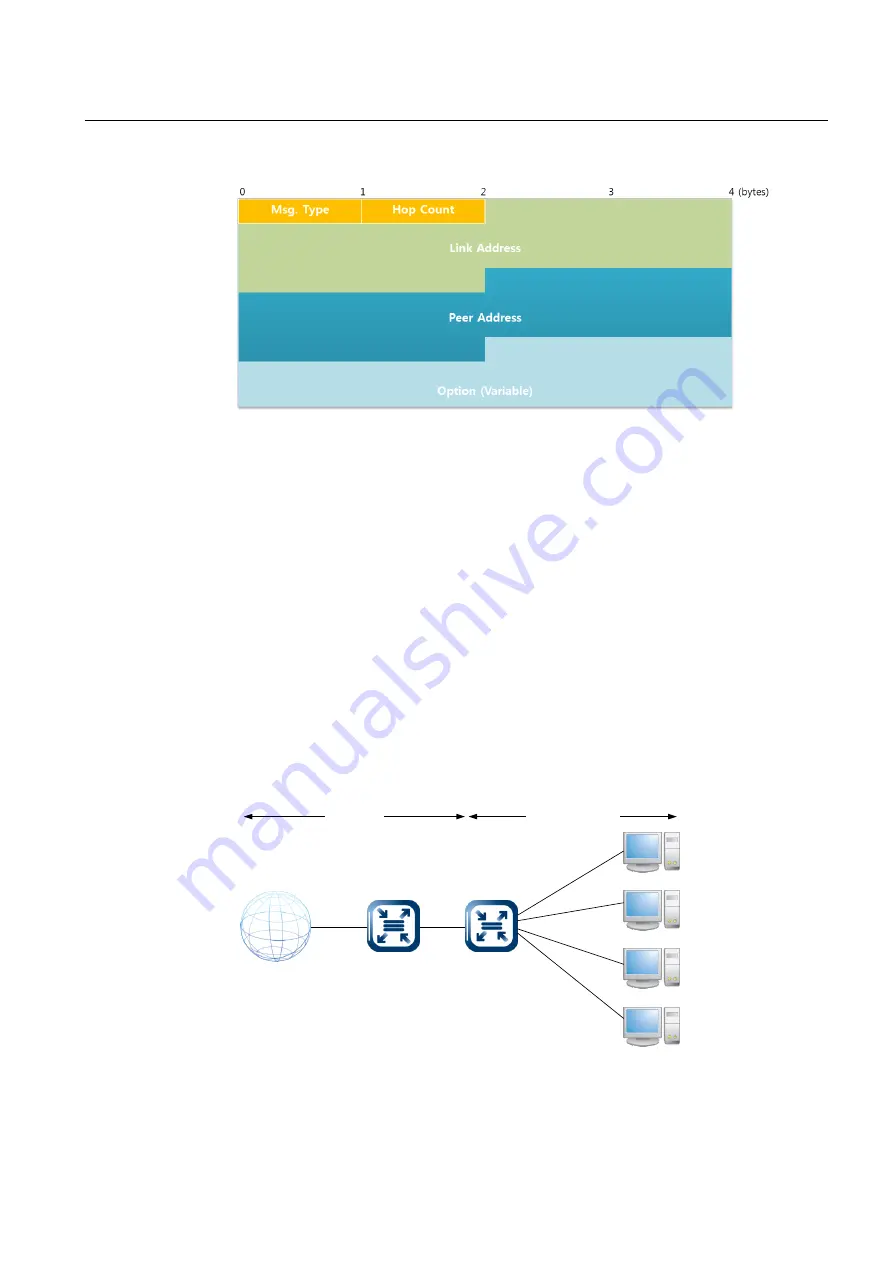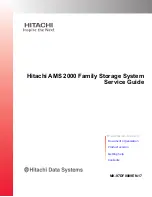
User Manual
UMN:CLI
V8102
431
The following figure shows the structure of these kinds of messages.
Fig. 9.41
General Shared Relay Message Format
The Hop Count field (1-byte) indicates the number of relay agents that have received the
message. A receiving relay agent can discard the message if it exceeds a configured
maximum hop count. The Link Address field (16-byte) contains a non-link-local address
that is assigned to an interface connected to the subnet on which the client is located.
From the Link Address field, the server can determine the correct address scope from
which to assign an address. The Peer Address field (16-byte) contains the IPv6 address
of the client that originally sent the message or the previous relay agent that relayed the
message. The Relay Message option provides an encapsulation of the messages being
exchanged between the client and the server.
Prefix Delegation for DHCPv6
This prefix delegation mechanism is appropriate for use by an ISP to delegate a prefix to
a subscriber, where the delegated prefix would possibly be subnetted and assigned to the
links within the subscriber's network. Prefix delegation with DHCP is independent of ad-
dress assignment with DHCP. A requesting router can use DHCP for just prefix delegation
or for prefix delegation along with address assignment and other configuration information.
ISP Network
ISP Core
Network
DHCP server
(delegating router)
CPE / DHCP client
(requesting router)
Subscriber Network
Subscriber PCs
Fig. 9.42
An Example of Prefix Delegation
















































